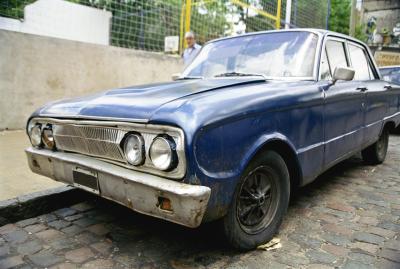
Catalytic converters may not be the bane they used to be, but they're never going to help horsepower. When aftermarket "high flow" cats sprang up as sort of a niche industry in the late '90s, they were essentially just rebranded stock cats with slightly larger cores and the correct fittings to make them a bolt-on replacement. Modern high-flow cats are far more sophisticated, but how big a difference they make depends more on your stock configuration than anything the parts supplier does.
There's no magic behind how a converter's constructed; it's essentially just two blocks of honey-comb-like ceramic -- the cores -- inside of a metal case. The insides of the honey-comb passages, called "micro-ducts," have a coating of precious metal: platinum and rhodium in the first block, platinum and palladium in the second. Exhaust gases exiting the engine carry unburnt fuel, nitrogen oxide and carbon monoxide molecules. Nitrogen oxide molecules entering the first block lose a nitrogen or an oxygen atom; these atoms re-form to produce harmless oxygen and nitrogen gas. The platinum in the second block grabs oxygen atoms, which combine with unburned fuel to produce heat. That heat makes the extra oxygen stick to carbon monoxide molecules, turning the molecules into carbon dioxide.
There are three basic ways to make a converter flow more exhaust gas: increase the size of the converter and thus the number of micro-ducts; increase the size of the micro-ducts; or decrease the thickness of the core material walls. Simply increasing the size of the converter will flow more, but will reduce gas density through the micro-ducts. This will drop the converter's reaction rate, which drops temperature and reduces converter function. Increasing the size of the ducts does essentially the same thing, hurting performance even more by reducing the amount of core material. The final and probably best option is to reduce the thickness of the core walls, which allows for a greater number of ducts in a smaller space.
How well an aftermarket converter works in a given application depends on how good or bad the original converter was in the first place. Old lead-pellet converters were true bricks in the exhaust stream, acting like a cork to exhaust flow and giving converters as a whole a bad name. But converters took a great leap forward in the 1980s and early 90s when ceramic cores hit the market. Replacing an old lead-pellet converter with a newer ceramic-core or metal-core converter or dumping the converter completely is sure to yield impressive improvements in horsepower and torque, but that's only because the original converter was so awful in the first place. These days, a stock converter flows well enough that improvements are usually marginal at best.
Back in 2006, "Import Tuner" performed a truly benchmark test of replacement ceramic-core and metal-core aftermarket converters as well as the "off-road use only" test pipe. In stock form, IT's project Civic put 147 horsepower and 105 foot-pounds of torque down to the ground. Replacing the stock converter with an aftermarket ceramic-core unit brought those readings up to 150 horses and 107 foot-pounds, while a metal-core unit with thinner walls picked up 1 horsepower and no improvement in torque. Getting rid of the cat altogether was good for 152 horsepower and 108 foot-pounds. Since the Civic's cat is fairly typical of what we see today, call that a 0.98 percent improvement for the ceramic cat, 1.02 percent for the MC and 1.03 for the test pipe.
While metal-core converters will help you to pick up a bit of power in a standard application, a metal-core cat does its best work behind turbocharged engines. A metal-core resists heat damage better than ceramic, which can easily overheat, crack and collapse when subjected to excessively rich air/fuel ratios. This gives the engine builder a bit more leeway in terms of air/fuel ratio. Turbochargers are particularly sensitive to restrictions in the exhaust stream, which means a metal-core cat may help to improve boost response and potential. But in most cases, a ceramic core should suffice.
The Fed unilaterally states that an OBD-II compliant converter -- generally post-1999 and as early as 1994 -- must have a comparable OBD-II converter as a replacement. The same goes for converters produced before 1994. But state laws ultimately dictate what you can and cannot do. Many states that do test for emissions don't do a visual inspection, which means you could have magic fairies in your exhaust and it doesn't matter as long as the sniffer says it's clean. In these cases, you can use any converter you like as long as it works -- perfect circumstances for lead-pellet owners, since newer metal- and ceramic-core converters both flow better and cleaner. Otherwise, you'll need a catalytic converter that is certified by the CARB (California Air Resources Board) or EPA (Environmental Protection Agency) and made specifically for your vehicle.